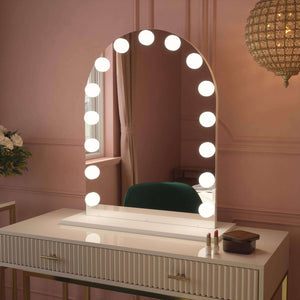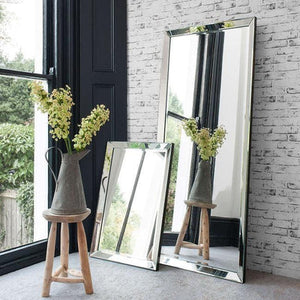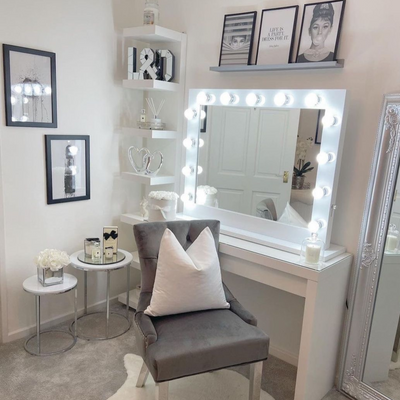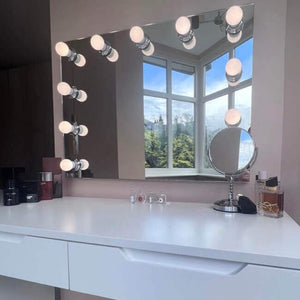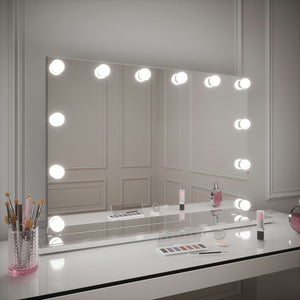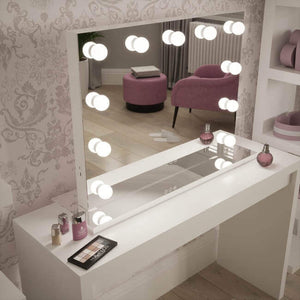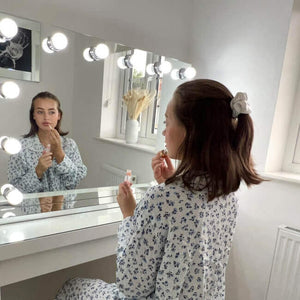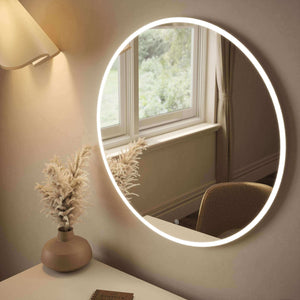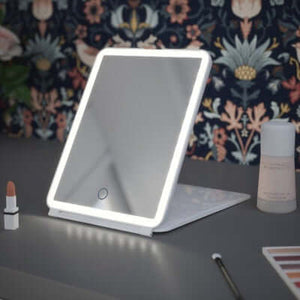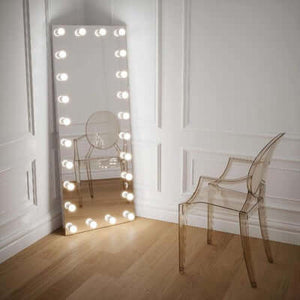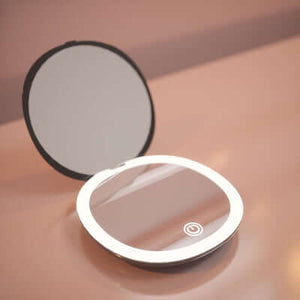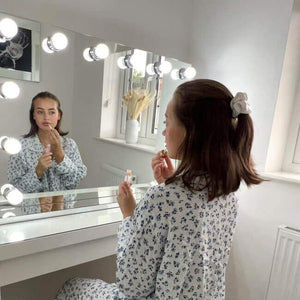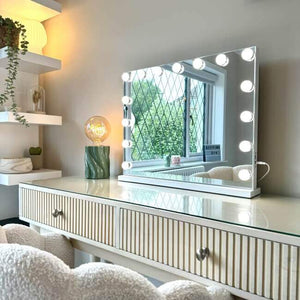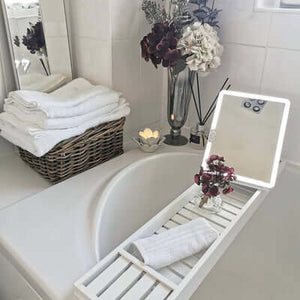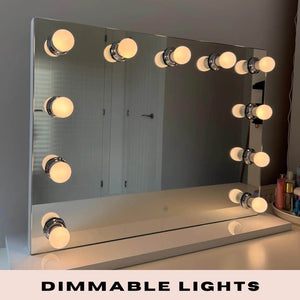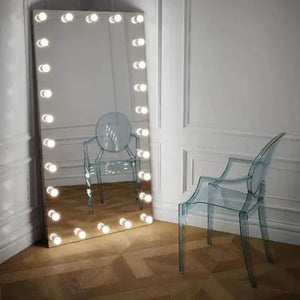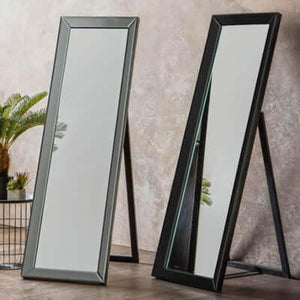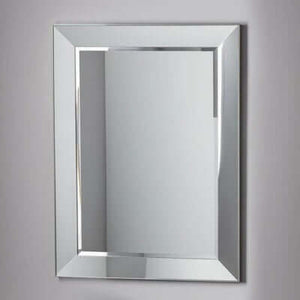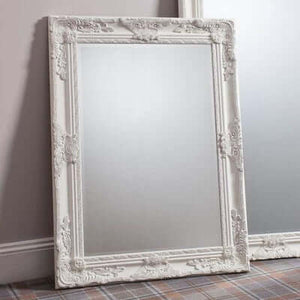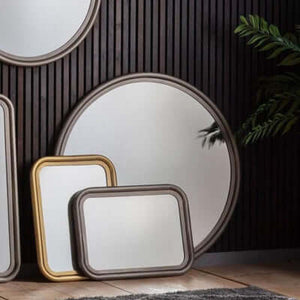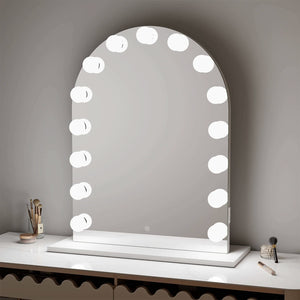After fifteen years of working in interior design with a specialty in mirror placement and spatial illusions, I thought I understood how transformative mirrors could be. But it wasn't until I needed to sell my own 1,400-square-foot ranch home in Dallas that I truly put my expertise to the ultimate test. Living in a neighborhood where most houses easily topped 2,000 square feet, I knew my compact home would need every advantage I could give it.
As someone who has helped countless clients maximize their spaces through strategic mirror use, I decided to approach my own home sale as the ultimate case study. Could professional-level mirror placement techniques really make the difference between a quick sale and months on the market? The answer, as it turned out, was a resounding yes.
What made this project particularly interesting was that I wasn't learning mirror techniques for the first time—I was applying advanced strategies I'd developed over years of professional practice to solve my own real estate challenge. The results exceeded even my professional expectations and taught me new lessons about the power of mirrors in home sales.

Professional Mirror Techniques Applied to Real Estate
Working with mirrors professionally has taught me that successful spatial illusions require understanding both the technical and psychological aspects of how people perceive space. When I approached my own home, I applied advanced techniques that go far beyond simply hanging a mirror on a wall and hoping for the best.
The foundation of professional mirror work is understanding sight lines and reflection angles. Every mirror placement must be calculated to create specific visual effects while avoiding awkward reflections that can make spaces feel uncomfortable or disorienting. In my own home, I used techniques I'd perfected in high-end residential projects to address the challenge of competing in a market that favored larger properties.
One of the most important professional insights I applied was understanding that mirrors should enhance existing architectural features rather than trying to create features that don't exist. My ranch home had good bones—nice proportions, decent natural light, and an efficient floor plan—but it needed help showcasing these strengths to buyers accustomed to more spacious homes.
The Science Behind Strategic Placement
My professional background has taught me that successful mirror placement is part art, part science. The science involves understanding how the human eye processes reflected images and how our brains interpret spatial information. When done correctly, mirrors don't just make spaces look bigger—they make them feel bigger, which is crucial for emotional buyer response.
I started with detailed measurements and sight line analysis throughout my home. Using techniques I'd developed for commercial projects, I mapped out exactly what each potential mirror placement would reflect from various viewing angles. This prevented the amateur mistake of installing mirrors that reflect awkward or unflattering views.
The key insight from my professional work is that mirrors must serve multiple functions simultaneously. The most effective installations provide practical benefits—better lighting, enhanced views, functional reflection—while also creating spatial illusions. This layered approach makes the mirror placement feel natural and intentional rather than like an obvious attempt to manipulate perception.
Living Room: The Master Class Application
My living room became the showcase for advanced mirror techniques I'd developed working with luxury residential clients. The space was 12 by 14 feet, which felt cramped compared to the expansive living areas common in my neighborhood. This was where I applied what I call "architectural mirroring"—using mirrors to create the illusion of additional architectural features.
I installed a floor-to-ceiling mirror with integrated LED backlighting on the wall opposite the main window. This wasn't just about reflection—the mirror was positioned at a precise angle to capture and redirect natural light while creating the illusion of a second window opening to an outdoor space. The LED backlighting added depth and prevented the harsh reflections that can make spaces feel cold.
The real professional technique was in the framing and integration. Instead of an obviously decorative mirror, I created what appeared to be a built-in architectural element. The mirror was set into a custom frame that matched the home's existing trim work, making it look like an original design feature rather than an addition.
The psychological impact was exactly what I'd achieved in client projects—visitors would comment on the room's brightness and openness without consciously realizing they were seeing reflected space. This subconscious response is the hallmark of professional mirror work.
Advanced Hallway Techniques
The narrow hallway connecting the living areas to the bedrooms presented the perfect opportunity to apply commercial-grade mirror techniques I'd used in upscale retail spaces. At 42 inches wide, the hallway felt constricted, but professional mirror placement could transform it into a design feature.
I used a technique called "progressive reflection," installing a series of five mirrors at calculated intervals along one wall. Each mirror was slightly different in size and positioned at minutely different angles, creating a dynamic visual effect that made the hallway appear to curve and expand rather than simply continue in a straight line.
The mirrors were custom-cut and professionally installed with hidden mounting systems that maintained clean lines. I incorporated LED strip lighting behind each mirror, creating a gallery-like effect that elevated the hallway from a utilitarian passage to an impressive design element.
This approach demonstrated a key principle from my professional work—turning potential weaknesses into showcased strengths. Instead of trying to hide the narrow hallway, the mirror installation made it a memorable architectural feature that buyers specifically commented on during showings.
Kitchen Innovation with Reflective Surfaces
My galley-style kitchen required sophisticated mirror techniques that I'd developed working with high-end restaurant and residential kitchen designs. The challenge was creating openness and connection without interfering with the kitchen's functionality or creating safety hazards with inappropriate reflective surfaces.
I designed and installed a custom mirrored backsplash that extended beyond typical backsplash areas to create maximum visual impact. The mirrors were specially treated for kitchen environments—heat-resistant, easy to clean, and designed to handle the moisture and temperature variations common in cooking spaces.
The key professional technique was angling the mirrored surfaces to reflect the kitchen island and the adjacent living area, creating visual connection between spaces that had previously felt separated. This required precise calculations to ensure the reflections enhanced the space rather than creating disorienting or impractical viewing angles.
On the end wall, I installed what appeared to be a window but was actually a sophisticated mirror installation with LED backlighting that mimicked natural daylight. This created the illusion that the galley kitchen had windows on both ends, dramatically changing how the space felt to anyone working in it.
Bedroom Sophistication
In the master bedroom, I applied luxury hospitality design techniques I'd learned from high-end hotel projects. The goal was creating a sense of spaciousness and luxury that would help buyers envision the room as a retreat rather than just a place to sleep.
I positioned a large custom mirror to capture and reflect the bedroom's single window while also reflecting the view into the en-suite bathroom. This created the illusion of multiple windows and made the bedroom feel connected to a larger suite of spaces rather than isolated.
The mirror was integrated with the room's lighting design, positioned to capture and redistribute both natural and artificial light throughout the space. This technique, borrowed from luxury retail design, creates even lighting that makes spaces feel larger and more comfortable.
In the guest bedroom, I used a technique I call "curated reflection," combining mirrors with artwork to create a gallery wall that served dual purposes. The mirrors provided spatial enhancement while the mixed media approach prevented the reflection from feeling too obvious or calculated.
Dining Room Drama
The small dining room presented an opportunity to apply theatrical design techniques I'd learned from entertainment industry projects. The space was barely large enough for a four-person table, but with professional mirror placement, it could feel suitable for much larger gatherings.
I installed a floor-to-ceiling mirror wall that was designed to look like a series of window panels. The mirror was divided into sections with subtle framing that mimicked traditional window mullions, creating the illusion of a wall of windows overlooking an adjacent dining space.
The installation included integrated LED lighting that could be dimmed to create different ambiance for different times of day. During evening showings, the lighting created warm, intimate reflections, while daytime viewing showed bright, spacious reflections that made the small room feel dramatically larger.
Professional Lighting Integration
My background in professional design taught me that mirrors and lighting must work together as an integrated system. Throughout my home, I designed lighting specifically to work with the mirror placements, creating effects that went far beyond what either element could achieve alone.
I used a combination of LED strip lighting, recessed fixtures, and decorative lighting, all positioned to maximize the impact of the mirror installations. The key was creating multiple lighting scenarios that would work for different showing times and seasons, ensuring the mirrors always enhanced rather than hindered the space.
The lighting design also addressed practical concerns—preventing glare, eliminating dark spots, and creating even illumination that made accurate color perception possible throughout the home.
The Professional Advantage in Market Response
When I listed my home, the response was immediate and enthusiastic. Buyers consistently commented on the "open" and "bright" feeling of the house, and several mentioned that it felt much larger than comparable homes they'd seen. My real estate agent noted that the professional-quality mirror work set my property apart from others in the price range.
The most validating moment came when the buyers who ultimately purchased my home specifically mentioned the mirror installations as a deciding factor. They were cash buyers—Dallas cash home buyers who specialized in properties with strong design potential—and they appreciated the professional-quality work that was already completed.
Professional Techniques Anyone Can Apply
While I had the advantage of professional training and experience, many of the techniques I used can be adapted for homeowners preparing their properties for sale. The key principles—strategic placement, quality installation, integration with lighting, and attention to what gets reflected—don't require professional credentials to understand or implement.
The most important lesson is that mirrors should solve specific problems rather than being added randomly. In my home, every mirror addressed a particular challenge: lack of natural light, narrow spaces, limited views, or disconnected rooms. This problem-solving approach ensures that mirror installations feel intentional and valuable rather than decorative afterthoughts.
Investment Return Analysis
From my professional perspective, the mirror installation in my home represented an excellent return on investment. The total cost, including custom work and professional installation, was approximately $4,500. Considering that my home sold quickly in a market where comparable properties were sitting unsold, the carrying costs I avoided far exceeded the installation investment.
More importantly, the buyers paid full asking price, mentioning specifically that the home felt move-in ready and professionally designed. This premium pricing, combined with the quick sale, demonstrated the financial value of professional-quality design work in real estate marketing.
Professional Standards for DIY Applications
For homeowners considering mirror installations for their own home sales, I recommend applying professional standards even when doing the work yourself. This means proper mounting with appropriate hardware, careful attention to what gets reflected, integration with existing lighting, and quality materials that will look good in photographs and showings.
The mirrors should feel like permanent architectural features rather than temporary decorations. This requires attention to framing, mounting, and integration with the room's existing design elements.
Lessons from Professional Practice
My experience selling my own home reinforced lessons I'd learned from years of professional mirror work. The most effective installations are those that enhance existing architectural strengths rather than trying to create something that doesn't belong. Quality matters more than quantity—fewer, well-placed mirrors create better results than many poorly positioned ones.
The psychological impact of professional mirror work extends beyond simple spatial illusion. Well-designed mirror installations create emotional responses—feelings of luxury, spaciousness, and sophistication—that influence buying decisions in ways that go far beyond square footage calculations.
The Broader Impact on Home Sales
Working professionally with mirrors has taught me that buyers respond to spatial quality as much as spatial quantity. A well-designed smaller space often outperforms a poorly configured larger space in terms of buyer satisfaction and willingness to pay premium prices.
My own home sale demonstrated this principle perfectly. By applying professional mirror techniques to enhance the perceived quality and sophistication of the space, I was able to compete successfully against larger properties and achieve a quick sale at full asking price.
The key insight is that professional design techniques—whether applied by professionals or knowledgeable homeowners—can level the playing field in competitive real estate markets. Quality design work allows smaller or older properties to compete effectively against newer, larger alternatives by offering superior spatial experience and visual appeal.
This experience reinforced my belief that strategic mirror placement represents one of the most cost-effective ways to enhance a property's marketability, particularly when applied with professional understanding of spatial psychology and design principles.
Liquid error (sections/article-template line 192): Invalid form type "70\n", must be one of ["product", "storefront_password", "contact", "customer_login", "create_customer", "recover_customer_password", "reset_customer_password", "guest_login", "currency", "activate_customer_password", "customer_address", "new_comment", "customer", "localization", "cart"]
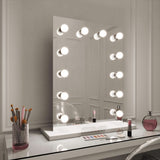 Alicia PRE ORDER - END OF SEPTEMBER. Hollywood Mirror 60cmx80cm
Alicia PRE ORDER - END OF SEPTEMBER. Hollywood Mirror 60cmx80cm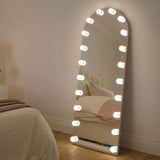 Angelina Full Length Arch Hollywood Mirror 160 x 60cm
Angelina Full Length Arch Hollywood Mirror 160 x 60cm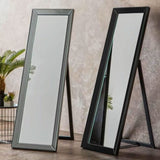 Angled Luna Mirror-Cheval Black
Angled Luna Mirror-Cheval Black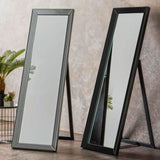 Angled Luna Mirror-Cheval Gray
Angled Luna Mirror-Cheval Gray

